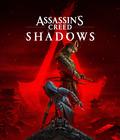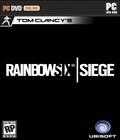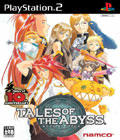Genre: RPG
Publisher: Namco Bandai
Developer: Namco Bandai
Release Date: October 10, 2006
Tales of the Abyss tells the story of Luke, nephew to the King of Kimlasca-Lanvalder. After being kidnapped as a child, Luke was confined to his home for the next seven years with nothing but studying and practicing swordplay to occupy his free hours. When his instructor is attacked by the mysterious Tear, Luke rushes to his defense and accidentally triggers a "resonance" that transports him and Tear to a far-off land. As Luke struggles to return home, he ends up intertwined with a plot to cause a massive war between Kimlasca-Lanvalder and its neighbor, and there the story begins.
Tales of the Abyss' story doesn't break any particularly new ground. It's long and full of twists, but experienced RPG veterans will probably see most of them coming a mile away. It also takes a long time to get going, and it could take a gamer well over 20 hours to get to the point where the plot actually starts to move. To make matters worse, the Abyss plot is tangled in dense technobabble for even the simplest of things. Without a glossary, trying to make sense of some of the magical explanations can make your eyes cross, and while things eventually become clearer, it can be rather frustrating and really takes you out of the plot.
The brightest spot of Abyss' story is the characters. Although Abyss's cast is comprised of the usual archetypes – the rebellious princess, mysterious magic user, smart-talking young girl, and powerful swordsman – each manages to come across as a fairly memorable character, quite a step up from the dull Tales of Symphonia and Legendia protagonists. This is due mostly to the writing, which is surprisingly natural sounding. The only real sour part is the main character, Luke, who is quite different from your usual RPG protagonist; he's arrogant, selfish, spoiled, violent and generally a completely unlikable person more reminiscent of a hero's rival than a hero. Even as the story acknowledges this and Luke develops, it just makes Luke change from an unlikable jerk to a dull-as-dirt cliché.
Like the previous games in the Tales of… franchise, Tales of the Abyss uses an action-based combat system, more reminiscent of a fighting title than an RPG. When the party enters combat, the player takes control of a single character. Fighting in real time, the player strings together regular attacks and "Artes" (special moves) to form punishing combos. Combat, in general, is almost identical to the GameCube's Tales of Symphonia, for all the good and bad that implies. Tales of the Abyss adds a few new features to spice things up, but in some ways, they hurt more than help.
Unlike Symphonia, Abyss gives you the option of moving around in three dimensions with the press of a button. Of all the changes, this improves the game the most and generally makes the biggest difference in combat. By holding L2, players can dodge attacks or try to flank the enemy, and while this can be crucial in some battles, it feels lacking compared to the full 3D control found in Star Ocean and Radiata Stories.
One of the biggest changes from the previous offerings in the series is the FOF or "Field of Fons." When a Fonist (Abyss-speak for magician) casts a spell, or when certain enemies use abilities, a circle of energy is created, matching that specific attack's element. When enough of the same element is used, that circle begins to glow, and if an Arte of the same element is used within that circle, it evolves into a new and more powerful attack. While this idea is great in concept, the Fon circles are too unwieldy to use in combat with any regularity. The field remains on the battle screen for an extremely short amount of time, and it's more frustrating than it is worth to maneuver into a small circle before it vanishes and then hope the enemy is nearby enough to allow you to hit them with the improved technique.
Abyss also adds the Capacity Core system. Similar to Titles in Tales of Symphonia, Cores are magical items equipped to your character which control how s/he grows. Each "core" affects different stats and causes them to increase faster, which means stronger characters in the long run. Some improve attack, some magic and some defense. While this adds a small amount of customization to your characters, you'll tend to stick with physical cores for your fighters and magic cores for your Fonists. Although keeping cores equipped can unlock special bonus abilities, these abilities are mostly useless, and no real effort is needed to acquire them. Long-time Tales fans needn't worry – Titles are still in, but they are relegated to minor bonuses and a few special costumes.
Likewise, by collecting special gems, the party members can customize the various Artes in different ways. Fonists can increase their attack power or decrease casting time, and warriors can let their attack knock back an enemy farther, or even steal items. However, apart from a few minor exceptions (like the aforementioned steal ability), all this boils down to is putting all of your gems into your favorite attack. Like most of Abyss's new systems, it adds the illusion of depth but rarely ends up being particularly complex or interesting.
For a title that came out at the end of the PlayStation 2's lifecycle, Abyss's graphics are a mixed bag. The backgrounds are all incredibly generic and forgettable, and I often found myself forgetting a location as soon as I left it. The character models are wonderfully expressive, showing emotions exceptionally well; they are the high point of the graphics, but they look a little bland outside of cut scenes. The game also suffers from some fairly noticeable frame rate drops during particularly busy battles or on the world map. It's not enough to hinder gameplay extensively, but it can be a little frustrating when trying to turn the camera or hit a combo. A few animated cut scenes serve to liven up important plot scenes, but they're few and far between.
There's nothing halfhearted about Tales of the Abyss' audio, however. The voice acting is generally excellent. A few characters, such as required cute animal Mieu, can grind your eardrums a bit, but all the major characters are well-acted, and the natural script helps the voice work find a flow that is very rare in games. Similarly, Abyss' soundtrack is spectacularly good. While the graphics don't do much to liven up the action, the music brings a real sense of emotion to every scene. The battle music is pulse-pounding and exciting, and overall, the audio experience is exceptionally good.
Tales of the Abyss is notably harder than Legendia and Symphonia, although that doesn't mean it is a particularly difficult, either. Most of the random battles can be pounded through by button-mashing, and some take more time to load than to fight. The boss battles add a bit of difficulty to the proceedings but tend to take longer only because the bosses have a lot more HP, not because they are particularly strong. A few optional bosses serve to provide additional challenge, but they are few and far between, and experienced Tales players will breeze through Abyss's battles surprisingly quickly. Likewise, Abyss is significantly longer too, and players can expect to spend nearly 60 hours on the main plot alone. With a significant amount of sidequests and mini-games, gamers could spend well over 100 hours without seeing everything the game has to offer.
In the end, Tales of the Abyss isn't a bad title. It takes a few steps forward and a few steps back from the previous offerings in the series. The plot is overly long and a bit too predictable, and although the gameplay is fun, it just doesn't bring anything particularly exciting to the world either, and the new systems are basically useless. Those looking for an RPG fix to hold them over could do worse than picking up Tales of the Abyss, but if you have limited time for gaming, you might want to give it a pass. Even those who don't play Abyss might want to consider the soundtrack, though!
Score: 7.2/10
More articles about Tales of the Abyss










 An epic tale and deep storyline, Tales of the Abyss follows the life of lead character Luke fon Fabre, the sole heir to a family of aristocrats, as he learns of friendship and sacrifice that could ultimately save or destroy the world.
An epic tale and deep storyline, Tales of the Abyss follows the life of lead character Luke fon Fabre, the sole heir to a family of aristocrats, as he learns of friendship and sacrifice that could ultimately save or destroy the world.
































